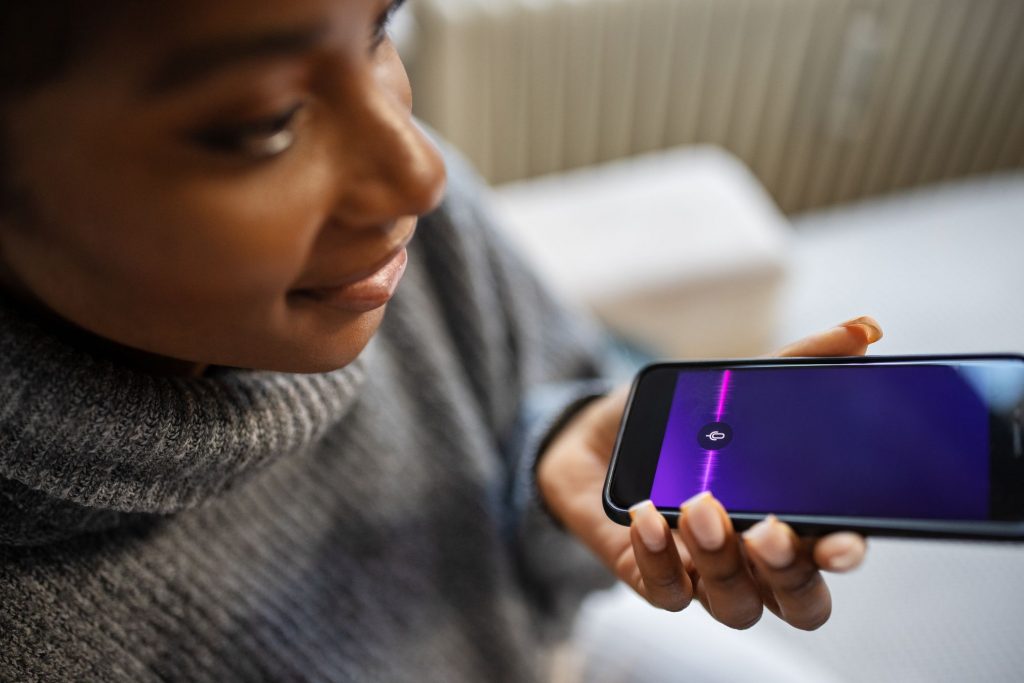/GettyImages-1318603905-64280bcc255b4158bb5452ff7564b9c8.jpg)
Key Takeaways
- Researchers have developed an AI-powered product that can detect anxious behavior with more than 90% accuracy.
- This is a part of a large, growing body of research suggesting that AI could revolutionize mental health diagnosis, treatment, and prevention.
- Scientists say more research is needed on bigger slices of the population.
A growing body of research suggests that artificial intelligence (AI) could be the future of mental health prevention and treatment, especially when it comes to early detection of psychological disorders.
Now, researchers at Simon Fraser University and the Institute of Business Administration in Karachi developed an AI-powered smartphone product with more than 90% accuracy in detecting signs of anxiety just from observing how people move while carrying out tasks and their daily habits.
Plenty of details still need to be smoothed out, but these results can give clinicians another tool to take on mental health disorders.
“It’s about supporting individuals through AI because sometimes people might miss out on important signals that might be very helpful for them and for their mental health,” Gulnaz Anjum, PhD, Simon Fraser University social psychologist, told Verywell. But this does not substitute going to see a specialist if necessary, Anjum said.
Their results were published last month in the journal Pervasive and Mobile Computing.
How to Spot the Signs of Anxiety
Anxiety is the most common form of mental disorder— approximately a third of Americans reported anxious feelings this past year alone. It has many shapes and forms, and it can crop up under the guise of extreme fear or worry, social anxiety, separation anxiety, or generalized anxiety disorder.
There are also some small everyday physical behaviors, also referred to as nervous habits, that the researchers identified as signs of anxiety like nail-biting, knuckle cracking, and leg or hand tapping.
To understand whether an AI system can be capable of noticing something as slight as the nuances of somebody who is struggling with anxiety and signaling it, the researchers had 10 participants carry out some tasks while being monitored by a smartphone app with inertial motion sensors. The app collected information about how the participants were moving, in order to see if they were displaying any signs of being anxious.
“So this is not a huge gadget,” Anjum said. “It’s really like, you know, adding a few additional sensors and using your own smartphone with a smartwatch to measure these things.”
Inside the app, the data was then fed to a set of deep learning algorithms.
“With an app we were able to see that with every movement that these people were doing,” Anjum said. “We were able to read the movement as anxious or not by using these sensors through our app.”
After they initially fed the AI data about what some of these anxious physical behaviors are, and then some real-life data, the more the AI worked, the more accurate the results. It reached a 92-95% accuracy rate of recognizing anxiety-related behaviors.
“It’s really remarkable to have something that can measure anxiety accurately,” Anjum said. “Of course, over time, when we have more data, it will continue to get even more accurate.”
Artificial Intelligence and Mental Health Treatment
This method is actually part of a field of study called Human Activity Recognition (HAR), which uses AI to analyze and identify specific movements or actions in people. This type of research is paving the way for understanding how AI can come in handy for clinical purposes for both physical and mental health.
Other researchers have used AI to aid mental health discoveries in many other ways. Researchers have successfully parsed the voices of veteran soldiers with AI for markers of PTSD, and used AI to recognize symptoms of PTSD in participants’ blood. AI has been used to develop therapy-like chatbots and virtual psychologists. It’s even been used to detect signs of depression in people’s way of speaking.
The uses are endless and growing. “This research is the latest in a series of studies that have indicated the effectiveness of combining wearable technologies with AI to help diagnose mental health conditions,” Soheila Borhani, MD, a physician-scientist at the University of Illinois and author of the forthcoming book “Deep Learning in Medicine,” told Verywell.
“The signs and symptoms of psychological disorders like depression or anxiety can be subtle and easy to miss, particularly at the onset of the disease when interventions have the highest likelihood of success,” Borhani added.
But, no matter how subtle or transitory, these can indeed be captured in real-time using smartphones without disrupting the individual’s daily routine. Then algorithms can sift through weeks or months worth of data to detect interesting patterns buried within, according to Borhani.
“The main problem, for now, is the current research is its relatively small sample size which is typical of early-stage studies of this nature,” Borhani said. So further research is necessary to confirm large-scale clinical efficacy.
For their next steps, Anjum and her team want to continue to answer some of the big questions about anxious behaviors like what constitutes too much worrying? How can a smartphone tell the difference between healthy anxiety and an anxiety disorder?
They hope to patent this as a product that can be used by clinicians and people who need it in the future. For example, this might look like an app that checks in with you if you’re displaying anxious behavior, or directly sends data over to your therapist. “Having that reminder might be a great thing for someone who needs to get some help,” Anjum said.
This measurement, however, is not equal to going to therapy or seeing a healthcare provider. “So this could be a good indicator for you, but then when it comes to seeking help, you really need to reach out to someone who is a practitioner,” Anjum said.

